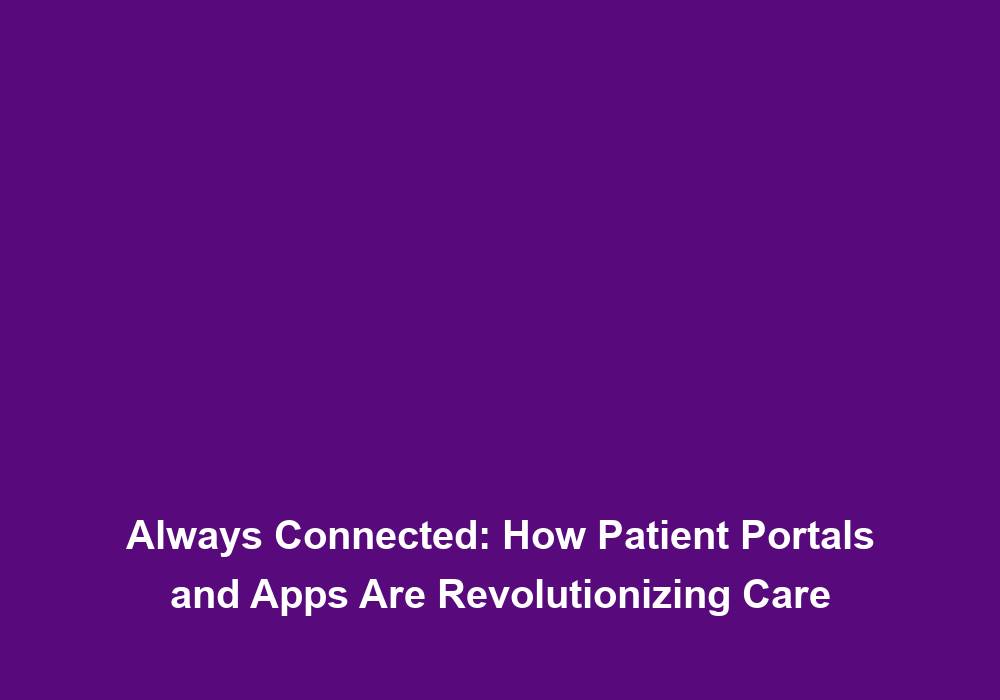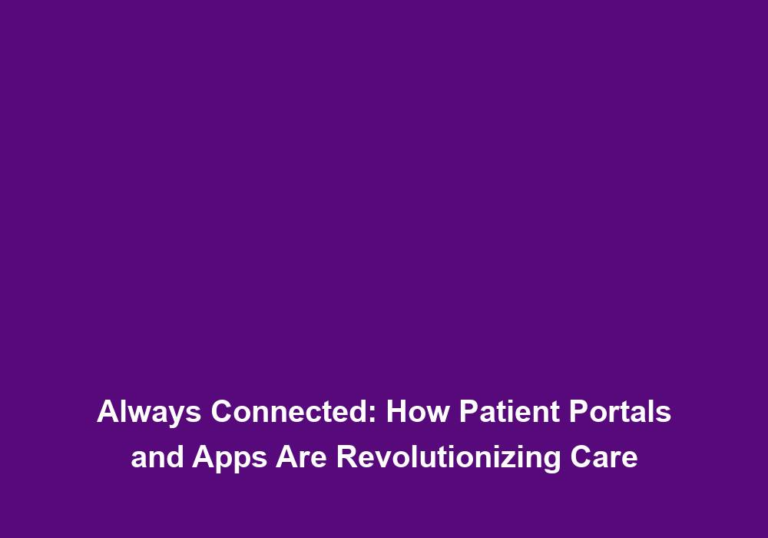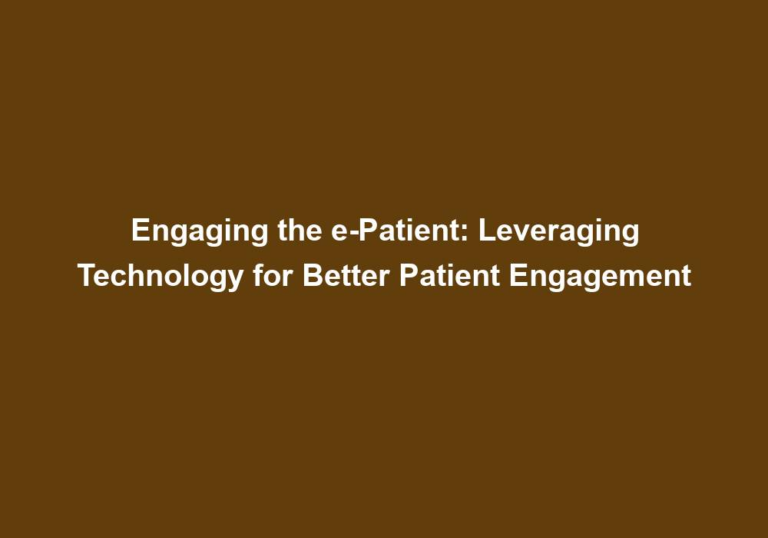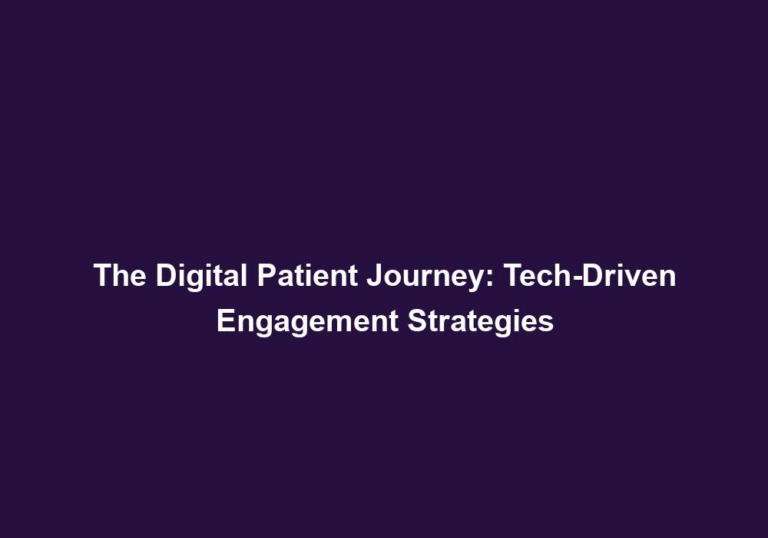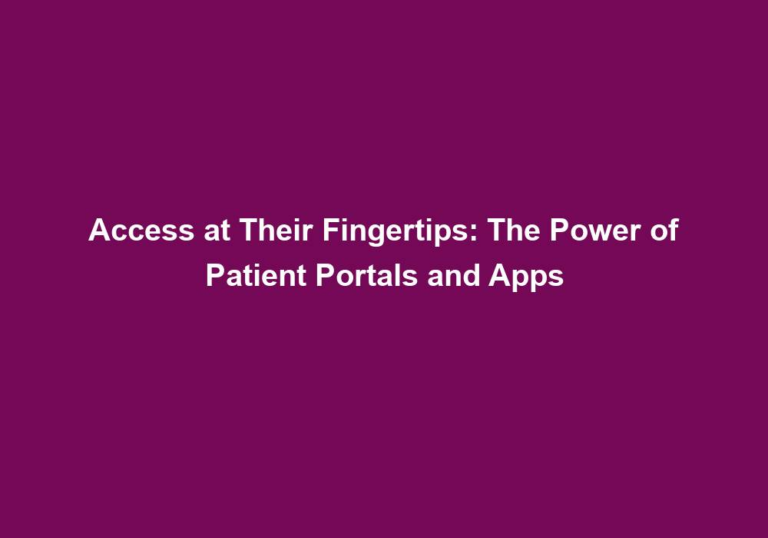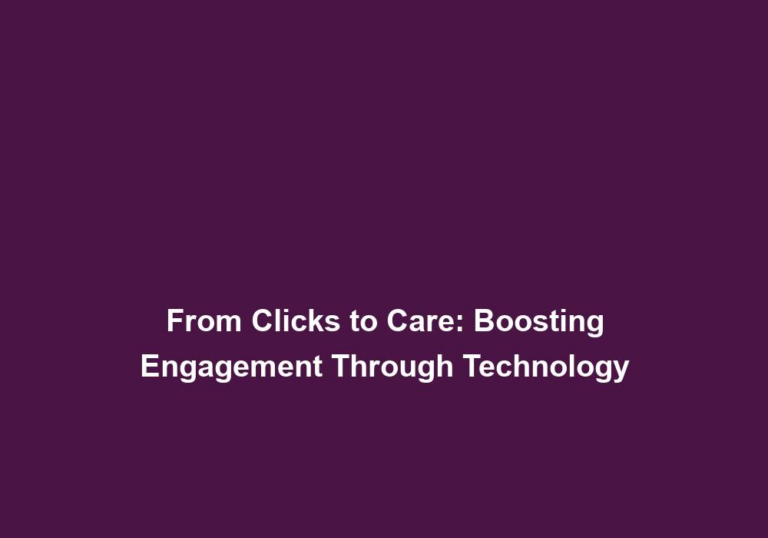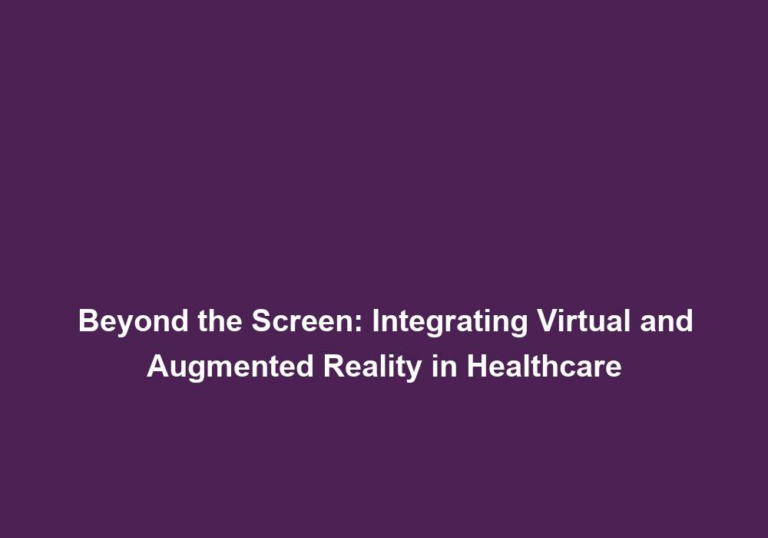Always Connected: How Patient Portals and Apps Are Revolutionizing Care
With the rapid advancements in technology, the healthcare industry is undergoing a significant transformation. One of the most notable changes is the increasing use of patient portals and mobile apps, which are revolutionizing the way patients and healthcare providers interact. These digital tools have revolutionized care by enhancing communication, improving patient engagement, and streamlining administrative tasks. In this article, we will explore the numerous benefits of patient portals and apps in healthcare.
1. Improved Communication and Accessibility
Patient portals and apps have bridged the communication gap between patients and healthcare providers, offering a convenient and secure platform for exchanging information. Patients can easily access their medical records, test results, and treatment plans, empowering them to be active participants in their own healthcare. This improved communication and accessibility allow patients to have a deeper understanding of their health conditions and make informed decisions about their care.
Furthermore, healthcare providers can communicate directly with patients through these platforms, providing updates, reminders, and answering any questions or concerns. This direct communication not only improves the overall patient experience but also allows healthcare providers to address any issues promptly, leading to better health outcomes.
Some key benefits of improved communication and accessibility include:
- Efficient sharing of medical information: Patient portals and apps enable patients to securely share their medical information with their healthcare providers, ensuring that accurate and up-to-date information is readily available.
- Timely access to healthcare services: Patients can request appointments, prescription refills, and test results through these platforms, reducing wait times and improving access to healthcare services.
- Increased patient satisfaction: By providing a user-friendly interface and easy access to information, patient portals and apps enhance the overall patient experience and satisfaction.
2. Enhanced Patient Engagement
Patient engagement is a crucial aspect of providing high-quality healthcare. Patient portals and apps play a significant role in increasing patient engagement by empowering individuals to take control of their health. These platforms offer features like appointment scheduling, medication reminders, and personalized health education resources.
By providing patients with access to their medical information and tools to manage their health, portals and apps encourage proactive involvement and promote better health outcomes. Patients can track their progress, set health goals, and receive personalized recommendations based on their medical records and preferences. This personalized approach to patient care fosters a sense of empowerment and responsibility, ultimately leading to improved patient satisfaction and adherence to treatment plans.
Some key benefits of enhanced patient engagement include:
- Improved medication adherence: Patient portals and apps can send medication reminders and notifications, helping patients stay on track with their prescribed treatments.
- Health education and self-care resources: These digital tools provide patients with educational materials, videos, and personalized health tips, empowering them to make informed decisions and actively participate in their treatment plans.
- Proactive management of chronic conditions: Patients with chronic conditions can use patient portals and apps to monitor their symptoms, track vital signs, and communicate with their healthcare providers, enabling early intervention and better disease management.
3. Streamlined Administrative Tasks
In addition to improving patient-provider communication, patient portals and apps streamline administrative tasks, benefiting both patients and healthcare providers. Patients can conveniently schedule appointments, request prescription refills, and complete necessary forms online, reducing paperwork and eliminating waiting times.
For healthcare providers, these digital tools automate administrative processes, reducing administrative burdens and allowing them to focus more on patient care. Patient portals and apps can integrate with electronic health records systems, enabling seamless and efficient transfer of information. This integration eliminates the need for manual data entry, minimizes errors, and improves the overall workflow in healthcare settings.
Some key benefits of streamlined administrative tasks include:
- Time and cost savings: By automating administrative tasks, patient portals and apps reduce the time and resources spent on manual paperwork, allowing healthcare providers to allocate more time to patient care.
- Improved accuracy and data quality: Digital tools ensure that patient information is entered accurately and consistently, reducing errors and improving the quality of data.
- Efficient coordination of care: Patient portals and apps facilitate communication and information sharing among healthcare providers, promoting coordinated and collaborative care.
4. Efficient Access to Medical Information
Patient portals and apps provide patients with seamless access to their medical information, eliminating the need for physical copies of records. This accessibility enables patients to share their medical history with other healthcare providers, facilitating coordinated and comprehensive care.
In emergency situations, having immediate access to patient records can be life-saving, as healthcare providers can quickly review critical information and make informed decisions. Patient portals and apps also enable patients to securely share their medical information with specialists, reducing the need for duplicate tests or procedures.
Some key benefits of efficient access to medical information include:
- Continuity of care: Patient portals and apps ensure that healthcare providers have access to accurate and up-to-date medical information, regardless of the patient’s location or the healthcare setting.
- Reduction in duplicate tests and procedures: By providing easy access to medical records, these digital tools help eliminate unnecessary tests and procedures, reducing healthcare costs and improving efficiency.
- Improved patient safety: Immediate access to medical information helps healthcare providers make informed decisions, leading to better patient outcomes and reduced medical errors.
5. Remote Monitoring and Telehealth Services
Patient portals and apps have played a pivotal role in expanding the reach of healthcare beyond traditional clinical settings. With the advent of remote monitoring devices and telehealth services, patients can now receive care from the comfort of their homes. Through these digital tools, healthcare providers can monitor patients’ vital signs, track progress, and conduct virtual consultations, reducing the need for in-person visits.
This is particularly beneficial for patients with chronic conditions or those residing in remote areas. Remote monitoring and telehealth services not only improve access to care but also enhance patient convenience, reduce travel costs, and minimize the risk of exposure to infectious diseases.
Some key benefits of remote monitoring and telehealth services include:
- Increased access to specialized care: Patients living in rural or underserved areas can receive specialized care through telehealth services, eliminating the need for long-distance travel and reducing healthcare disparities.
- Improved disease management: Remote monitoring devices integrated with patient portals and apps allow healthcare providers to remotely monitor patients’ vital signs and health conditions, enabling early intervention and better disease management.
- Enhanced patient satisfaction: Telehealth services provide a convenient and flexible way for patients to receive care, leading to improved patient satisfaction and engagement.
6. Increased Data Security and Privacy
Privacy and data security are paramount in healthcare. Patient portals and apps prioritize the protection of sensitive medical information through robust security measures. These platforms adhere to strict privacy regulations, such as the Health Insurance Portability and Accountability Act (HIPAA), ensuring that patient data remains confidential and secure.
By utilizing encryption techniques and access controls, patient portals and apps provide patients with peace of mind regarding the privacy of their personal health information. Regular security audits and updates further strengthen data security, minimizing the risk of data breaches and unauthorized access.
Some key benefits of increased data security and privacy include:
- Protection against data breaches: Patient portals and apps employ advanced security measures to safeguard sensitive patient information, reducing the risk of data breaches and identity theft.
- Compliance with privacy regulations: By adhering to strict privacy regulations like HIPAA, these digital tools ensure that patient data is handled in a secure and compliant manner.
- Patient trust and confidence: Robust data security measures build trust and confidence among patients, encouraging them to actively engage with patient portals and apps.
7. Empowering Patient Education and Self-Care
Education plays a vital role in promoting wellness and preventing disease. Patient portals and apps offer a valuable resource for patient education, empowering individuals to make informed decisions about their health. These platforms provide access to educational materials, videos, and personalized health tips, promoting self-care and enabling patients to actively participate in their treatment plans.
By fostering health literacy, patient portals and apps contribute to improved patient outcomes and overall well-being. Patients who are well-informed about their health conditions and treatment options are more likely to adhere to their prescribed treatments, engage in healthy behaviors, and effectively manage their chronic conditions.
Some key benefits of empowering patient education and self-care include:
- Improved health literacy: Patient portals and apps provide patients with easy access to reliable health information, enabling them to understand their health conditions and make informed decisions.
- Personalized health recommendations: These digital tools can analyze patients’ medical records and preferences to provide personalized health tips and recommendations, facilitating self-care and healthy lifestyle choices.
- Active participation in treatment plans: Patient education resources empower patients to actively participate in their treatment plans, leading to better treatment adherence and improved health outcomes.
In conclusion, patient portals and apps have revolutionized the healthcare industry by improving communication, enhancing patient engagement, streamlining administrative tasks, and providing efficient access to medical information. These digital tools have transformed the way patients and healthcare providers interact, offering convenience, accessibility, and personalized care.
With their ability to facilitate remote monitoring and telehealth services, patient portals and apps have become indispensable in delivering quality healthcare. Embracing these advancements is crucial for healthcare organizations to stay connected and provide the highest standard of care in today’s digital era.

